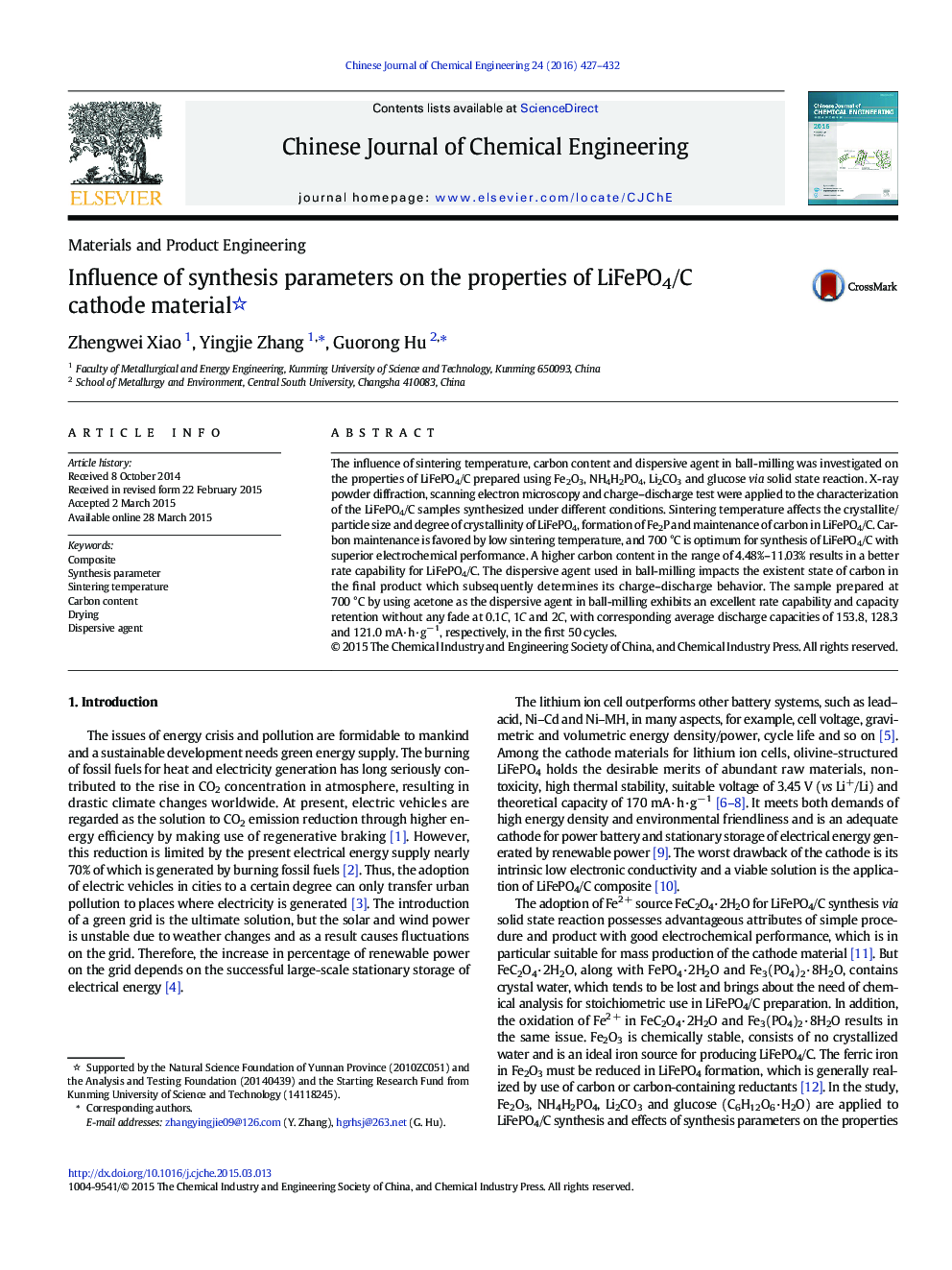| Article ID | Journal | Published Year | Pages | File Type |
|---|---|---|---|---|
| 165973 | Chinese Journal of Chemical Engineering | 2016 | 6 Pages |
The influence of sintering temperature, carbon content and dispersive agent in ball-milling was investigated on the properties of LiFePO4/C prepared using Fe2O3, NH4H2PO4, Li2CO3 and glucose via solid state reaction. X-ray powder diffraction, scanning electron microscopy and charge–discharge test were applied to the characterization of the LiFePO4/C samples synthesized under different conditions. Sintering temperature affects the crystallite/particle size and degree of crystallinity of LiFePO4, formation of Fe2P and maintenance of carbon in LiFePO4/C. Carbon maintenance is favored by low sintering temperature, and 700 °C is optimum for synthesis of LiFePO4/C with superior electrochemical performance. A higher carbon content in the range of 4.48%–11.03% results in a better rate capability for LiFePO4/C. The dispersive agent used in ball-milling impacts the existent state of carbon in the final product which subsequently determines its charge–discharge behavior. The sample prepared at 700 °C by using acetone as the dispersive agent in ball-milling exhibits an excellent rate capability and capacity retention without any fade at 0.1C, 1C and 2C, with corresponding average discharge capacities of 153.8, 128.3 and 121.0 mA·h·g− 1, respectively, in the first 50 cycles.
Graphical abstractThe choice of dispersive agent in ball-milling is critical in determining the existent state of amorphous carbon in final product LiFePO4/C. The dispersion state of ball-milled Fe2O3, NH4H2PO4, Li2CO3 and glucose in acetone is greatly different from those in ethanol and water for their different molecular polarities. Meanwhile, acetone has a much lower boiling point of 56.2 °C than ethanol and water, which ensures a faster drying of the ball-milled pulp to alleviate severe segregation of ingredients. An ideal and more even distribution of amorphous carbon in LiFePO4/C synthesized using acetone in place of ethanol as the dispersive agent in ball-milling leads to a superior electrochemical performance.Figure optionsDownload full-size imageDownload as PowerPoint slide
